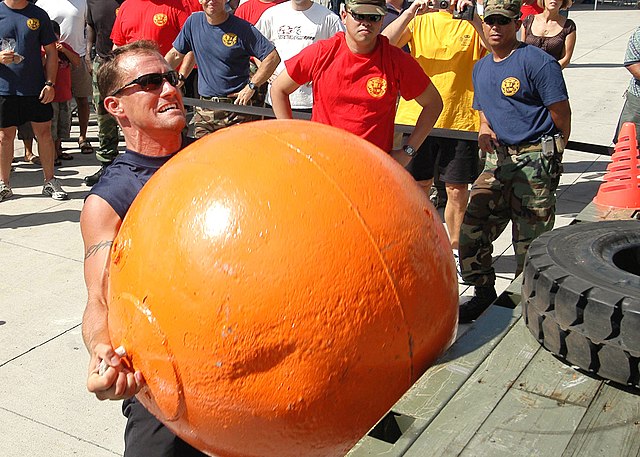So what can we do about the solar system trying to bomb us? Fortunately, the Space Generation Advisory Council is on the case with its Move an Asteroid contest.

You're looking for the slightly nerdier Move An Asteroid contest next door.The most recent winner, MIT grad student Sung Wook Paek came up with an ingenious idea: paintballs.
Now of course, the first question you should be asking is: paintballs? Wasn't that one of the 47.3 failed attempts to plug the Deepwater Horizon oil spill? A good question, but the point of the paintballs is not actually to push the asteroid off course themselves, but to enlist help from the biggest guy in the room: the sun.
By painting the asteroid white, the Lilliputian barrage would effectively turn the asteroid into a solar sail. The key thing to remember here is conservation of momentum. The asteroid will have an immense amount of momentum,
 to be exact. The paintballs will impart a bit of momentum to the asteroid, but having much smaller mass m, their momentum p will be essentially negligible. The sneaky part of the attack will be to increase the reflectance of the asteroid so that instead of absorbing solar photons, it reflects them.
to be exact. The paintballs will impart a bit of momentum to the asteroid, but having much smaller mass m, their momentum p will be essentially negligible. The sneaky part of the attack will be to increase the reflectance of the asteroid so that instead of absorbing solar photons, it reflects them.It turns out that even though photons have no mass, these light particles do still have momentum:
 (E is energy, c is the speed of light). Every time the asteroid absorbs a photon, conservation of momentum requires that the late photon's momentum transfers to the asteroid. Astronomers are aware of this radiation pressure, and they include it in predictions for asteroid trajectories. However, if instead of absorbing the photon, the newly anemic asteroid reflects it, that means the photon not only loses its original momentum, but it now has the same amount of momentum in the opposite direction. So to cancel that out, the asteroid has to gain an equal amount of momentum in the photon's original direction.
(E is energy, c is the speed of light). Every time the asteroid absorbs a photon, conservation of momentum requires that the late photon's momentum transfers to the asteroid. Astronomers are aware of this radiation pressure, and they include it in predictions for asteroid trajectories. However, if instead of absorbing the photon, the newly anemic asteroid reflects it, that means the photon not only loses its original momentum, but it now has the same amount of momentum in the opposite direction. So to cancel that out, the asteroid has to gain an equal amount of momentum in the photon's original direction.Imagine playing catch on ice skates. When you catch the ball, it transfers momentum to you and pushes you backward. Now, if like a paintballed asteroid you throw the ball back whence it came, you get pushed backward once again. This increase of momentum transfer is what pushes the asteroid off course. The momentum from each photon is tiny, but the photons are unlimited and free.

Just don't absorb too much momentum at once.So if we catch the asteroid early enough, the slow and steady approach – changing the radiation pressure it absorbs from the sun – would be enough to make the difference between the meteor exploding over Russia and the harmless (but hulking) asteroid 2012 DA14.




Comments